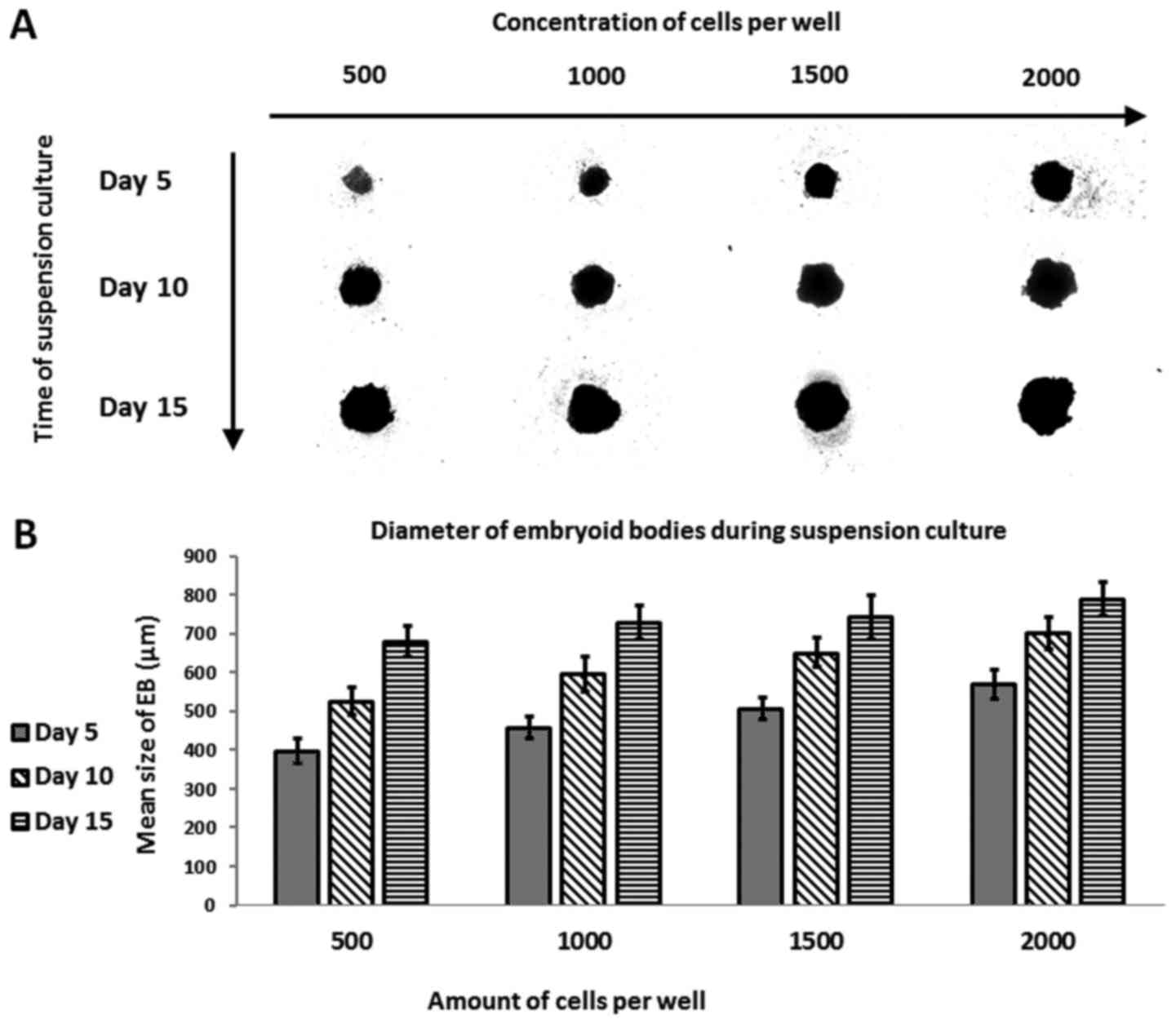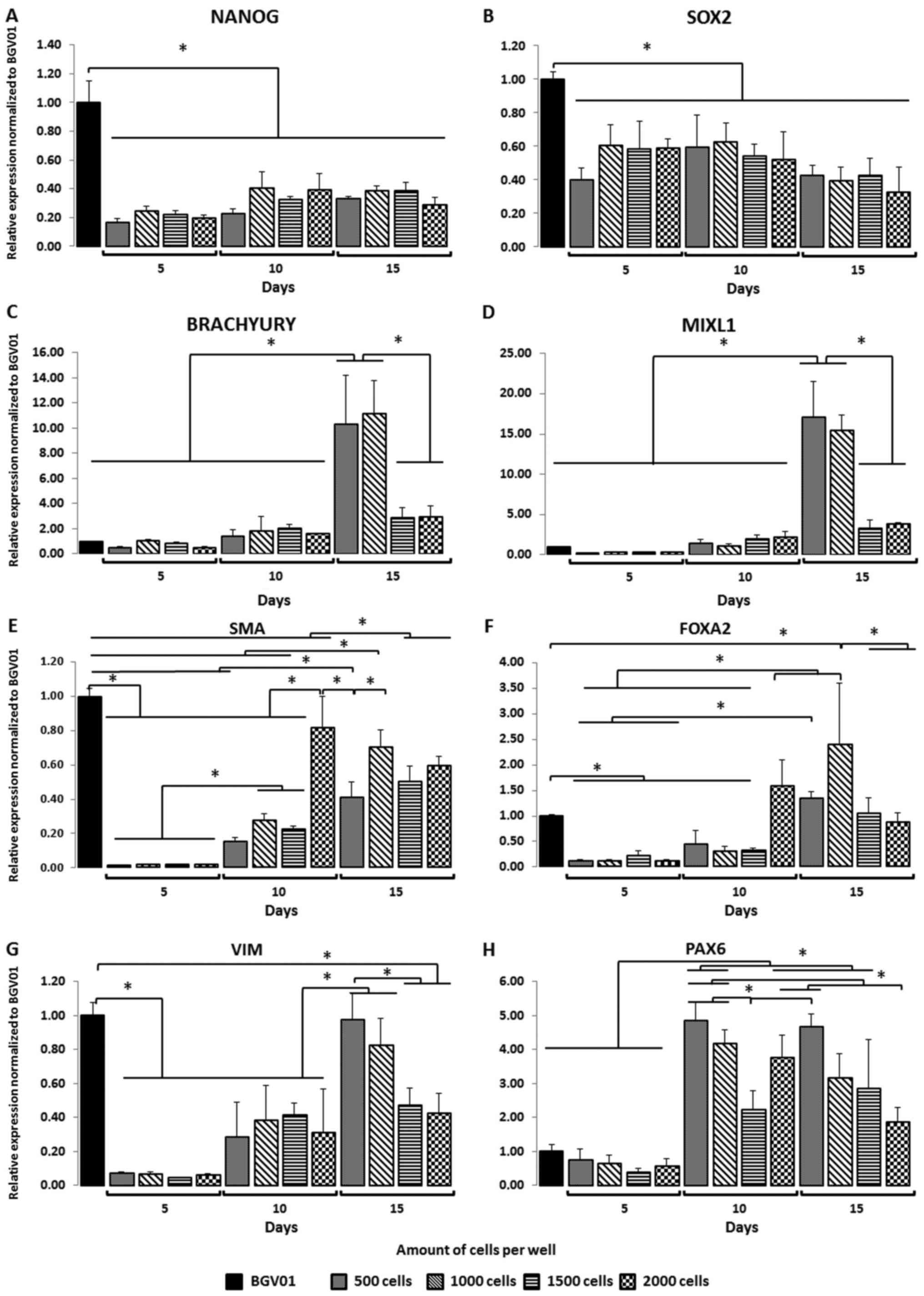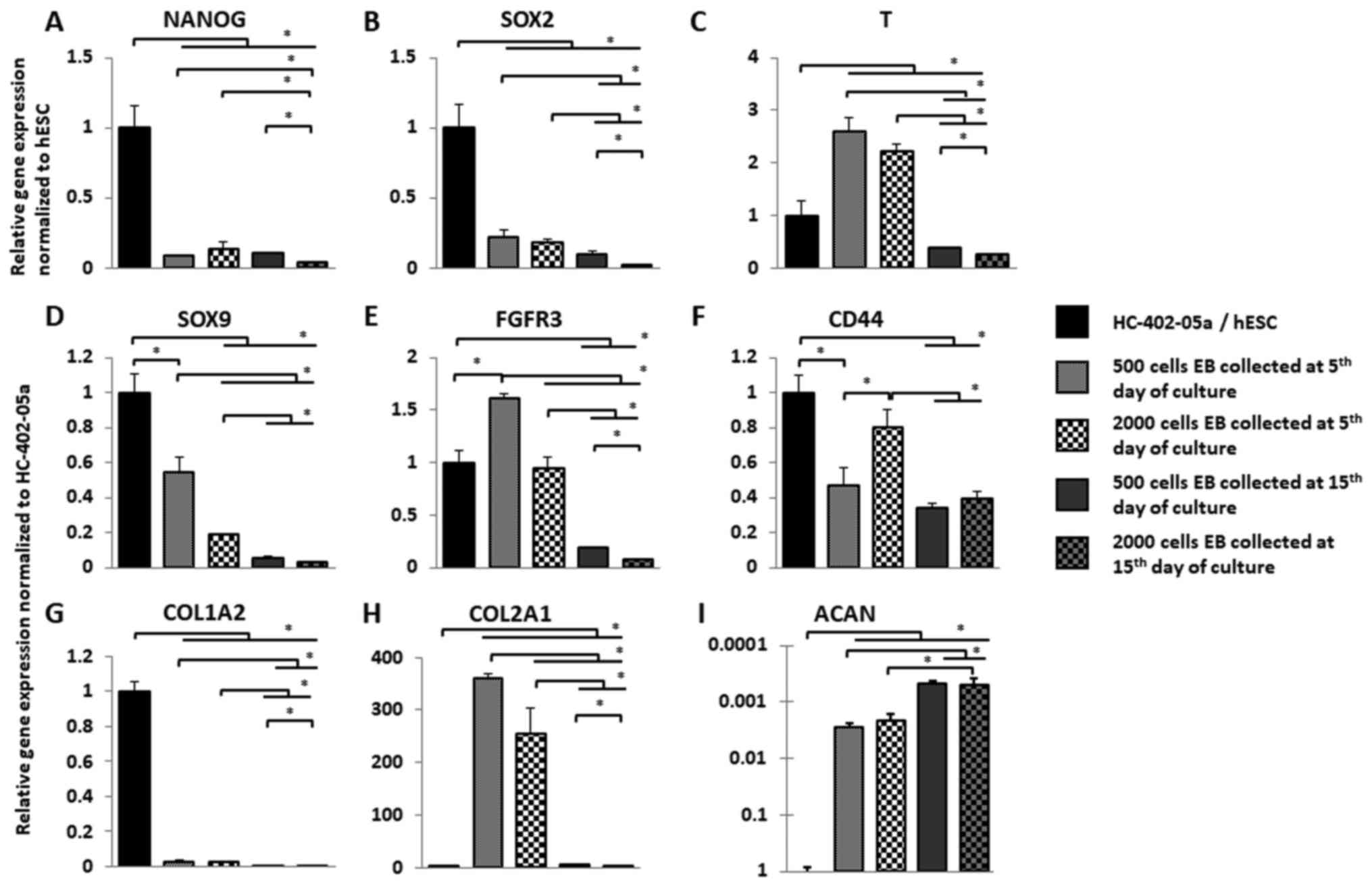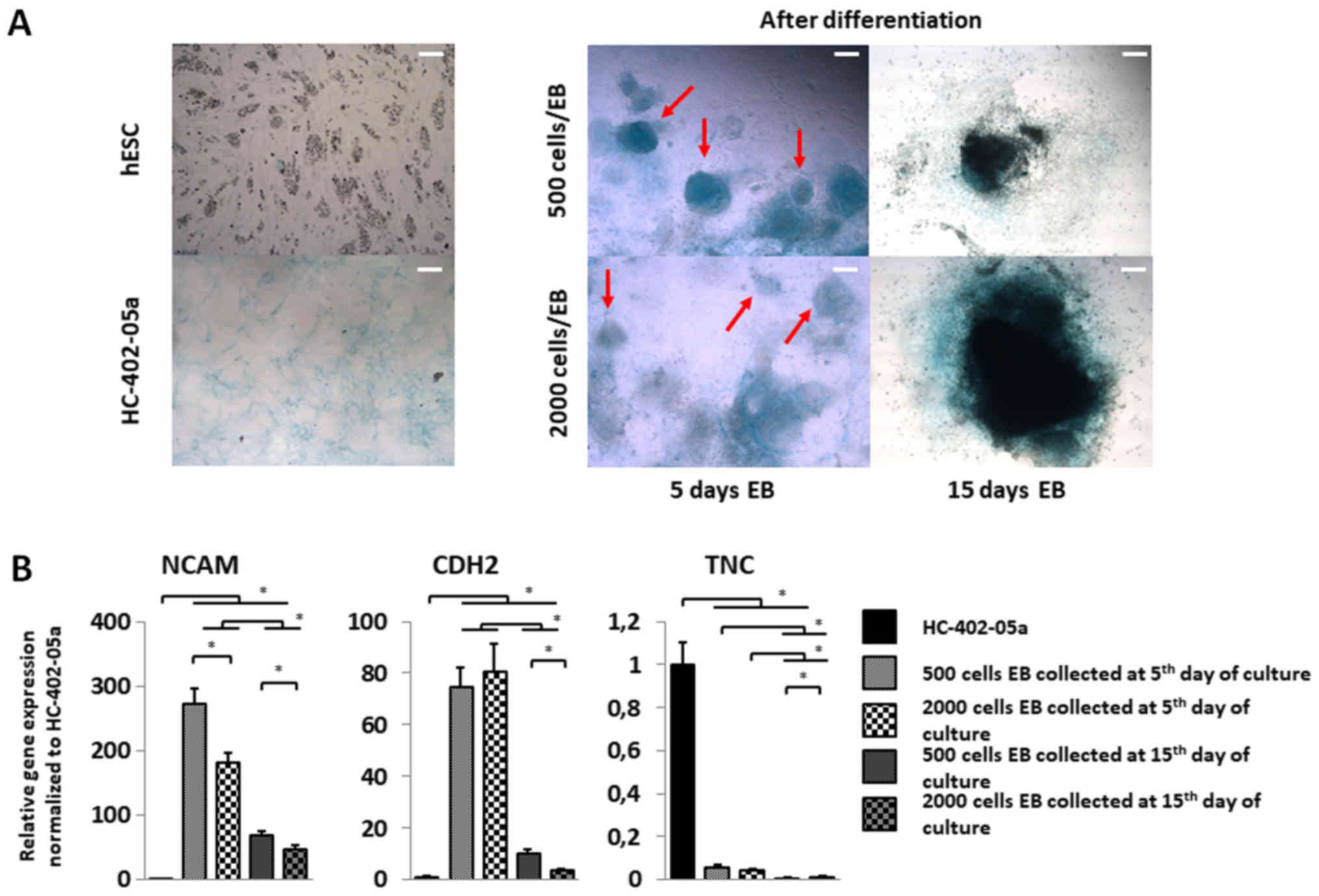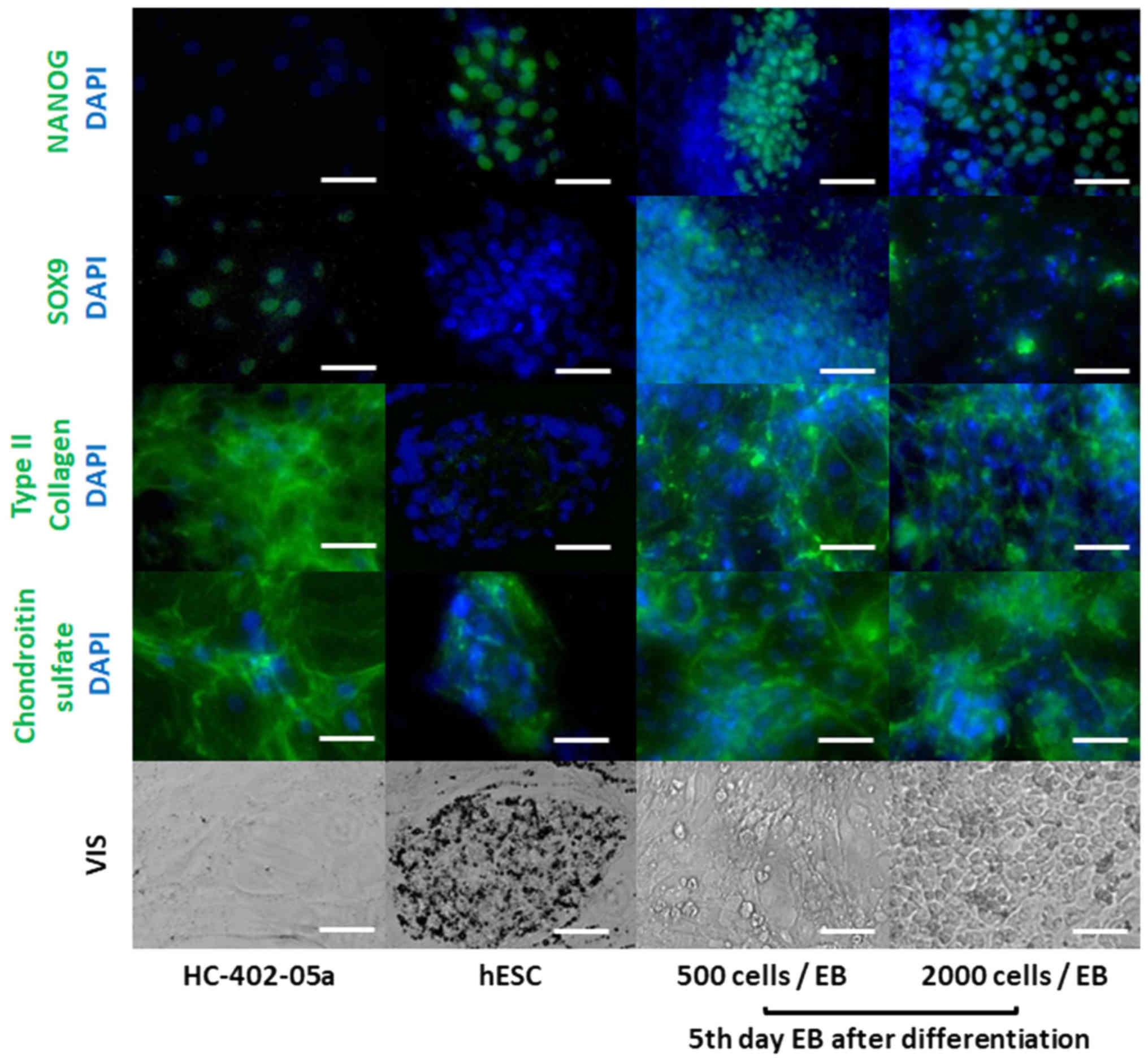|
1
|
de Windt TS, Vonk LA, Brittberg M and
Saris DBF: Treatment and prevention of (Early) osteoarthritis using
articular cartilage repair-fact or fiction? A systematic review.
Cartilage. 4 3 Suppl:5S–12S. 2013. View Article : Google Scholar : PubMed/NCBI
|
|
2
|
Li Y, Wei X, Zhou J and Wei L: The
age-related changes in cartilage and osteoarthritis. Biomed Res
Int. 2013:9165302013.PubMed/NCBI
|
|
3
|
Madry H, Luyten FP and Facchini A:
Biological aspects of early osteoarthritis. Knee Surg Sports
Traumatol Arthrosc. 20:407–422. 2012. View Article : Google Scholar : PubMed/NCBI
|
|
4
|
Teixeira Moreira LS, Leijten JC, Sobral J,
Jin R, van Apeldoorn AA, Feijen J, van Blitterswijk C, Dijkstra PJ
and Karperien M: High throughput generated micro-aggregates of
chondrocytes stimulate cartilage formation in vitro and in vivo.
Eur Cell Mater. 23:387–399. 2012. View Article : Google Scholar : PubMed/NCBI
|
|
5
|
Caron MM, Emans PJ, Coolsen MM, Voss L,
Surtel DA, Cremers A, van Rhijn LW and Welting TJ:
Redifferentiation of dedifferentiated human articular chondrocytes:
Comparison of 2D and 3D cultures. Osteoarthritis Cartilage.
20:1170–1178. 2012. View Article : Google Scholar : PubMed/NCBI
|
|
6
|
Carroll SH and Ravid K: Differentiation of
mesenchymal stem cells to osteoblasts and chondrocytes: A focus on
adenosine receptors. Expert Rev Mol Med. 15:e12013. View Article : Google Scholar : PubMed/NCBI
|
|
7
|
Solchaga LA, Penick KJ and Welter JF:
Chondrogenic differentiation of bone marrow-derived mesenchymal
stem cells: Tips and tricksMethods in molecular biology. 698.
Vemuri M, Chase LG and Rao MS: Humana Press; Totowa, NJ: pp.
253–278. 2011, View Article : Google Scholar : PubMed/NCBI
|
|
8
|
Kanawa M, Igarashi A, Ronald VS, Higashi
Y, Kurihara H, Sugiyama M, Saskianti T, Pan H and Kato Y:
Age-dependent decrease in the chondrogenic potential of human bone
marrow mesenchymal stromal cells expanded with fibroblast growth
factor-2. Cytotherapy. 15:1062–1072. 2013. View Article : Google Scholar : PubMed/NCBI
|
|
9
|
Ko JY, Kim KI, Park S and Im GI: In vitro
chondrogenesis and in vivo repair of osteochondral defect with
human induced pluripotent stem cells. Biomaterials. 35:3571–3581.
2014. View Article : Google Scholar : PubMed/NCBI
|
|
10
|
Tsumaki N, Okada M and Yamashita A: iPS
cell technologies and cartilage regeneration. Bone. 70:48–54. 2015.
View Article : Google Scholar : PubMed/NCBI
|
|
11
|
Robinton DA and Daley GQ: The promise of
induced pluripotent stem cells in research and therapy. Nature.
481:295–305. 2012. View Article : Google Scholar : PubMed/NCBI
|
|
12
|
Beers J, Linask KL, Chen JA, Siniscalchi
LI, Lin Y, Zheng W, Rao M and Chen G: A cost-effective and
efficient reprogramming platform for large-scale production of
integration-free human induced pluripotent stem cells in chemically
defined culture. Sci Rep. 5:113192015. View Article : Google Scholar : PubMed/NCBI
|
|
13
|
Toh WS, Guo XM, Choo AB, Lu K, Lee EH and
Cao T: Differentiation and enrichment of expandable chondrogenic
cells from human embryonic stem cells in vitro. J Cell Mol Med.
13:3570–3590. 2009. View Article : Google Scholar : PubMed/NCBI
|
|
14
|
Oldershaw RA, Baxter MA, Lowe ET, Bates N,
Grady LM, Soncin F, Brison DR, Hardingham TE and Kimber SJ:
Directed differentiation of human embryonic stem cells toward
chondrocytes. Nat Biotechnol. 28:1187–1194. 2010. View Article : Google Scholar : PubMed/NCBI
|
|
15
|
Suchorska WM, Augustyniak E, Richter M and
Trzeciak T: Comparison of four protocols to generate
chondrocyte-like cells from human induced pluripotent stem cells
(hiPSCs). Stem Cell Rev. 13:299–308. 2017. View Article : Google Scholar : PubMed/NCBI
|
|
16
|
Mahmoudifar N and Doran PM: Chondrogenesis
and cartilage tissue engineering: The longer road to technology
development. Trends Biotechnol. 30:166–176. 2012. View Article : Google Scholar : PubMed/NCBI
|
|
17
|
Moon SH, Ju J, Park SJ, Bae D, Chung HM
and Lee SH: Optimizing human embryonic stem cells differentiation
efficiency by screening size-tunable homogenous embryoid bodies.
Biomaterials. 35:5987–5997. 2014. View Article : Google Scholar : PubMed/NCBI
|
|
18
|
Preda MB, Burlacu A and Simionescu M:
Defined-size embryoid bodies formed in the presence of serum
replacement increases the efficiency of the cardiac differentiation
of mouse embryonic stem cells. Tissue Cell. 45:54–60. 2013.
View Article : Google Scholar : PubMed/NCBI
|
|
19
|
Van Winkle AP, Gates ID and Kallos MS:
Mass transfer limitations in embryoid bodies during human embryonic
stem cell differentiation. Cells Tissues Organs. 196:34–47. 2012.
View Article : Google Scholar : PubMed/NCBI
|
|
20
|
Hwang YS, Chung BG, Ortmann D, Hattori N,
Moeller HC and Khademhosseini A: Microwell-mediated control of
embryoid body size regulates embryonic stem cell fate via
differential expression of WNT5a and WNT11. Proc Natl Acad Sci USA.
106:16978–16983. 2009. View Article : Google Scholar : PubMed/NCBI
|
|
21
|
Livak KJ and Schmittgen TD: Analysis of
relative gene expression data using real-time quantitative PCR and
the 2(-Delta Delta C(T)) method. Methods. 25:402–408. 2001.
View Article : Google Scholar : PubMed/NCBI
|
|
22
|
Suchorska WM, Lach MS, Richter M,
Kaczmarczyk J and Trzeciak T: Bioimaging: An useful tool to monitor
differentiation of human embryonic stem cells into chondrocytes.
Ann Biomed Eng. 44:1845–1859. 2016. View Article : Google Scholar : PubMed/NCBI
|
|
23
|
Dias AD, Unser AM, Xie Y, Chrisey DB and
Corr DT: Generating size-controlled embryoid bodies using laser
direct-write. Biofabrication. 6:0250072014. View Article : Google Scholar : PubMed/NCBI
|
|
24
|
Xu F, Sridharan B, Wang S, Gurkan UA,
Syverud B and Demirci U: Embryonic stem cell bioprinting for
uniform and controlled size embryoid body formation.
Biomicrofluidics. 5:222072011. View Article : Google Scholar : PubMed/NCBI
|
|
25
|
Pettinato G, Wen X and Zhang N: Formation
of well-defined embryoid bodies from dissociated human induced
pluripotent stem cells using microfabricated cell-repellent
microwell arrays. Sci Rep. 4:74022014. View Article : Google Scholar : PubMed/NCBI
|
|
26
|
Ng ES, Davis RP, Azzola L, Stanley EG and
Elefanty AG: Forced aggregation of defined numbers of human
embryonic stem cells into embryoid bodies fosters robust,
reproducible hematopoietic differentiation. Blood. 106:1601–1603.
2005. View Article : Google Scholar : PubMed/NCBI
|
|
27
|
Giobbe GG, Zagallo M, Riello M, Serena E,
Masi G, Barzon L, Di Camillo B and Elvassore N: Confined 3D
microenvironment regulates early differentiation in human
pluripotent stem cells. Biotechnol Bioeng. 109:3119–3132. 2012.
View Article : Google Scholar : PubMed/NCBI
|
|
28
|
Messana JM, Hwang NS, Coburn J, Elisseeff
JH and Zhang Z: Size of the embryoid body influences chondrogenesis
of mouse embryonic stem cells. J Tissue Eng Regen Med. 2:499–506.
2008. View
Article : Google Scholar : PubMed/NCBI
|
|
29
|
Cha JM, Bae H, Sadr N, Manoucheri S,
Edalat F, Kim K, Kim SB, Kwon IK, Hwang YS and Khademhosseini A:
Embryoid body size-mediated differential endodermal and mesodermal
differentiation using polyethylene glycol (PEG) Microwell Array.
Mac Res. 23:245–255. 2015. View Article : Google Scholar
|
|
30
|
Lee EJ, Lee HN, Kang HJ, Kim KH, Hur J,
Cho HJ, Lee J, Chung HM, Cho J, Cho MY, et al: Novel embryoid
body-based method to derive mesenchymal stem cells from human
embryonic stem cells. Tissue Eng Part A. 16:705–715. 2010.
View Article : Google Scholar : PubMed/NCBI
|
|
31
|
Cheng A, Kapacee Z, Peng J, Lu S, Lucas
RJ, Hardingham TE and Kimber SJ: Cartilage repair using human
embryonic stem cell-derived chondroprogenitors. Stem Cells Transl
Med. 3:1287–1294. 2014. View Article : Google Scholar : PubMed/NCBI
|
|
32
|
Yang SL, Harnish E, Leeuw T, Dietz U,
Batchelder E, Wright PS, Peppard J, August P, Volle-Challier C,
Bono F, et al: Compound screening platform using human induced
pluripotent stem cells to identify small molecules that promote
chondrogenesis. Protein Cell. 3:934–942. 2012. View Article : Google Scholar : PubMed/NCBI
|
|
33
|
Goh SK, Olsen P and Banerjee I:
Extracellular matrix aggregates from differentiating embryoid
bodies as a scaffold to support ESC proliferation and
differentiation. PLoS One. 8:e618562013. View Article : Google Scholar : PubMed/NCBI
|
|
34
|
Shukla S, Nair R, Rolle MW, Braun KR, Chan
CK, Johnson PY, Wight TN and McDevitt TC: Synthesis and
organization of hyaluronan and versican by embryonic stem cells
undergoing embryoid body differentiation. J Histochem Cytochem.
58:345–358. 2010. View Article : Google Scholar : PubMed/NCBI
|
|
35
|
Okamura N, Hasegawa M, Nakoshi Y, Iino T,
Sudo A, Imanaka-Yoshida K, Yoshida T and Uchida A: Deficiency of
tenascin-C delays articular cartilage repair in mice.
Osteoarthritis Cartilage. 18:839–848. 2010. View Article : Google Scholar : PubMed/NCBI
|
|
36
|
Tavella S, Raffo P, Tacchetti C, Cancedda
R and Castagnola P: N-CAM and N-cadherin expression during in vitro
chondrogenesis. Exp Cell Res. 215:354–362. 1994. View Article : Google Scholar : PubMed/NCBI
|















